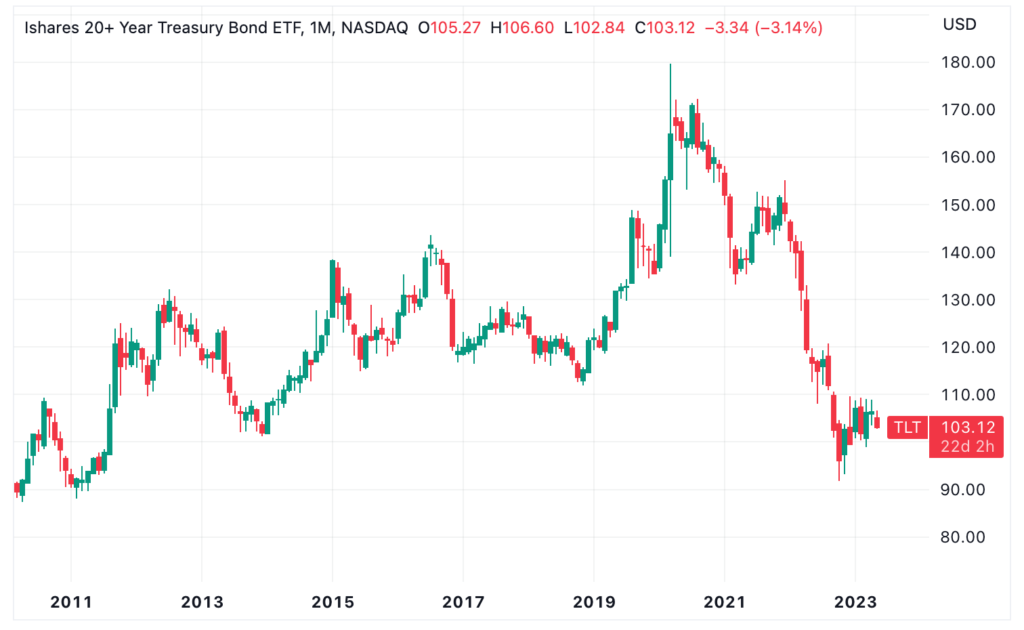Bonds are generally thought to be the boring, relatively safe part of an investment portfolio. They’ve acted as a safety net, providing a sense of security to investors during turbulent times. However, in 2022, the traditional relationship between stocks and bonds was turned on its head. Bonds were no longer a predictable asset but instead became a source of anxiety for investors when the bond market experienced a massive sell-off, resulting in the worst year on record.

Nevertheless, the dynamic appears to be different this year. Although the Federal Reserve has signaled its intent to continue raising interest rates, the increase is unlikely to be as dramatic or rapid — in which case the impact on bonds would be more muted. Contrarian investors may want to consider taking a small position in bonds in 2023 as part of their investment strategy. With that in mind, I’m excited to share my new trade idea in this blog post.
Are you interested in taking a long position in bonds without committing a significant amount of capital? Wondering how to do it in the most capital-efficient way possible? Using a synthetic long position in bonds with the iShares 20+ Year Treasury Bond ETF (TLT) options may be the solution you’re looking for. Not only can this approach allow you to take advantage of potential bond market gains, but it also gives you the flexibility to make adjustments to your position, increasing the probability of profit.
A synthetic long asset position is a strategy for options trading that is designed to mimic a long position. It’s created by buying an at-the-money call option and selling a put option at the same strike price, with both options expiring on the same date. This strategy allows you to benefit from the upward price movement of the underlying asset, in this case, TLT, while minimizing your upfront capital requirement. Just like a long stock position, synthetic long come with unlimited potential for profit or risk.
Here’s how it works. Let’s say TLT is currently trading at $100 per share. You purchase one TLT call option with a strike price of $100 and a premium paid of $2 per share. Simultaneously, you sell one TLT put option with a strike price of $100 and a premium of $2 collected per share. Ideally, the net premium should be close to zero, which means the cost of the call option should be about the same as the premium received for selling the put option. It’s important to note that since TLT pays out dividends, the risk associated with the dividends is already factored into the put option price.
When it comes to gains in dollar amount, a synthetic long using options can be similar to a long stock position. However, percentage gains can be larger due to the power of leverage. It’s important to remember that leverage works both ways, so caution is needed. Most traders avoid holding a synthetic long through to its expiration date. Instead, they use options to employ leverage and take a directional bet, and then exit before expiration by selling the long call and buying back the short put. This is a great tactic for avoiding buying the underlying asset, reducing assignment risk, and avoiding the increased capital outlay that would come with it.